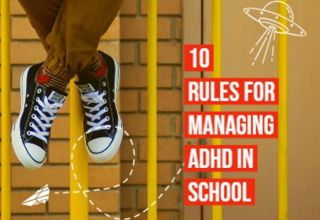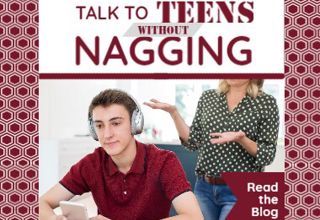Does Sugar Mimic or Increase ADHD Symptoms?

The following is based on the book—ADHD: Non-Medication Treatments and Skills for Children and Teens A Workbook for Clinicians and Parents: 162 Tools, Techniques, Activities & Handouts by PESI author Debra Burdick, LCSWR, BCN.
Have a cranky, irritable, and unmotivated child or teen that cannot concentrate well? Perhaps sugar-loaded foods are to blame! Eating foods high in sugar results in a surge of sugar in the bloodstream followed by a dumping of energy a short time later.
Your hyperactive client may be sensitive to the effects of sugar, and they may become extremely hyper when they have it. But as their body adjusts to a sudden increase in blood sugar, it will trigger an increase in insulin which will rapidly lower the sugar level in the blood. As the blood sugar level decreases, it can worsen the already low brain arousal level of the ADHD child or teen and aggravate behavioral problems.
Studies are contradictory about the effects of sugar on hyperactivity and behavior, and many indicate no change in symptoms (Wolriach, ML, 1994). Yet many of my clients have discovered that sugar was a culprit in making symptoms worse.
Discover if sugar is impacting your client's ADHD symptoms by downloading and completing the following worksheets with your client. You'll find skill building and integration thoughts below.
Handout 19.1.1. | Food Diary
Handout 19.1.2. | Food Symptom Diary Example
Handout 19.1.3 | Food Symptom Diary
SKILL BUILDING: Find out how much sugar your client consumes. Help them keep track by using a Food Diary (Handout 19.1.1.) to write down everything they eat for 1-2 days. Review it with them to see what food choices they are making and how much sugar they are eating. Teach them to look at food labels, and show them where the sugar content is listed. Discuss with parents, older children and teens the effects of sugar on the symptoms of ADHD.
Explain that sugar affects some people with ADHD by increasing hyperactivity, poor concentration and irritability. If they consume a lot of sugar, use the Food Symptom Diary (Handout 19.1.3) to determine if sugar is increasing and/or decreasing their ADHD symptoms. You can see a completed example of the food symptom diary using Handout 19.1.2.
Explain that the glycemic index (GI) is a scale that indicates how fast the body will convert a particular food to glucose (sugar). The higher the number, the faster the rise in blood sugar will be. A low GI value is 55 or less, medium is 56 – 69 and high is 70 or more. Encourage them to serve foods that have a low glycemic index.
INTEGRATION:
Learn more from Debra!
Reference: Wolraich, M.L., Lindgren, S.D., Stumbo, P.J., Stegink, L.D., Appelbaum, M.I., & Kiritsy, M.C. (1994). Effects of diets high in sucrose or aspartame on the behavior and cognitive performance of children. New England Journal of Medicine, 330(5), 301–7.
Have a cranky, irritable, and unmotivated child or teen that cannot concentrate well? Perhaps sugar-loaded foods are to blame! Eating foods high in sugar results in a surge of sugar in the bloodstream followed by a dumping of energy a short time later.
Your hyperactive client may be sensitive to the effects of sugar, and they may become extremely hyper when they have it. But as their body adjusts to a sudden increase in blood sugar, it will trigger an increase in insulin which will rapidly lower the sugar level in the blood. As the blood sugar level decreases, it can worsen the already low brain arousal level of the ADHD child or teen and aggravate behavioral problems.
Studies are contradictory about the effects of sugar on hyperactivity and behavior, and many indicate no change in symptoms (Wolriach, ML, 1994). Yet many of my clients have discovered that sugar was a culprit in making symptoms worse.
Discover if sugar is impacting your client's ADHD symptoms by downloading and completing the following worksheets with your client. You'll find skill building and integration thoughts below.
Worksheet Downloads
Handout 19.1.1. | Food Diary
Handout 19.1.2. | Food Symptom Diary Example
Handout 19.1.3 | Food Symptom Diary
SKILL BUILDING: Find out how much sugar your client consumes. Help them keep track by using a Food Diary (Handout 19.1.1.) to write down everything they eat for 1-2 days. Review it with them to see what food choices they are making and how much sugar they are eating. Teach them to look at food labels, and show them where the sugar content is listed. Discuss with parents, older children and teens the effects of sugar on the symptoms of ADHD.
Explain that sugar affects some people with ADHD by increasing hyperactivity, poor concentration and irritability. If they consume a lot of sugar, use the Food Symptom Diary (Handout 19.1.3) to determine if sugar is increasing and/or decreasing their ADHD symptoms. You can see a completed example of the food symptom diary using Handout 19.1.2.
Explain that the glycemic index (GI) is a scale that indicates how fast the body will convert a particular food to glucose (sugar). The higher the number, the faster the rise in blood sugar will be. A low GI value is 55 or less, medium is 56 – 69 and high is 70 or more. Encourage them to serve foods that have a low glycemic index.
For example: One 20-ounce bottle of a popular orange soda contains 83 grams of sugar. That translates to 21 teaspoons of sugar. They might replace that with a flavored water such as 0 calorie SoBe® LifeWater Fuji Apple Pear which is sweetened with a stevia extract and has 0 grams of sugar. (At the time of this writing stevia has been found to be safe and non-toxic, but as always, encourage clients to consult with their doctors before use.)
INTEGRATION:
- How much sugar is the client consuming?
- How much impact is sugar having on the client’s ADHD symptoms?
- Were they able to complete the Food Diary?
- Did they discover a pattern of increased ADHD symptoms following consumption of sugar when they completed the Food/ Symptom Diary?
- Are they finding ways to decrease sugar intake?
 |
Learn more from Debra!
- Read: The Lazy River: An Exercise in Mindfulness
- Visit her website: The Brain Lady.
Reference: Wolraich, M.L., Lindgren, S.D., Stumbo, P.J., Stegink, L.D., Appelbaum, M.I., & Kiritsy, M.C. (1994). Effects of diets high in sucrose or aspartame on the behavior and cognitive performance of children. New England Journal of Medicine, 330(5), 301–7.




